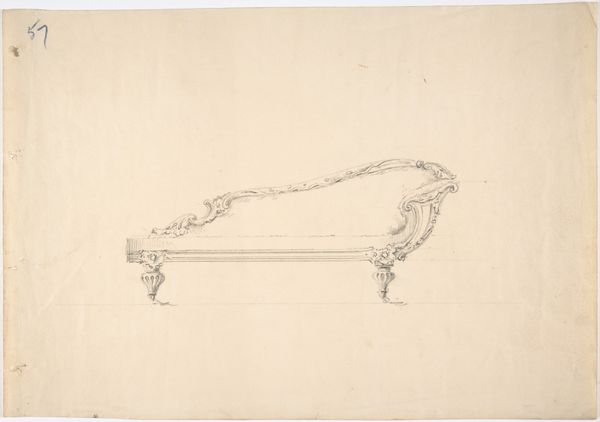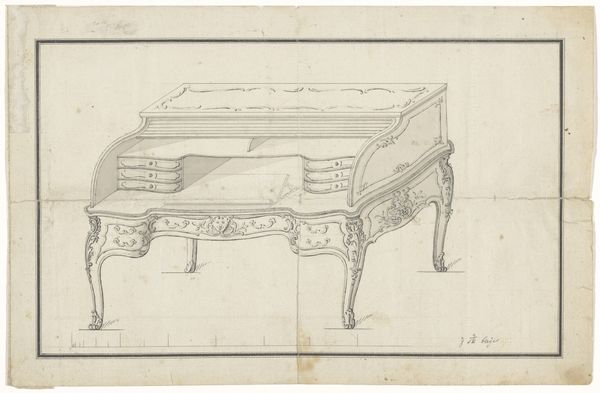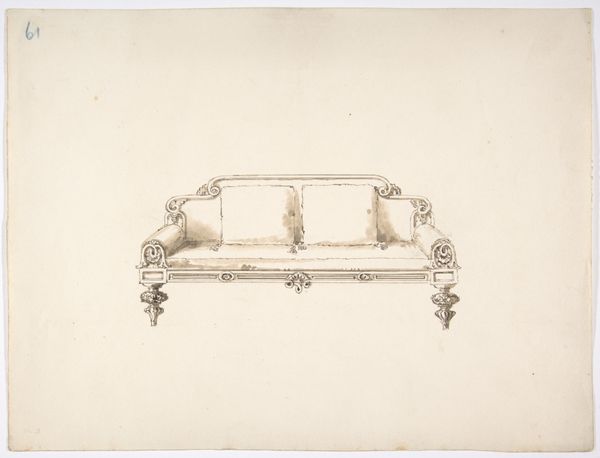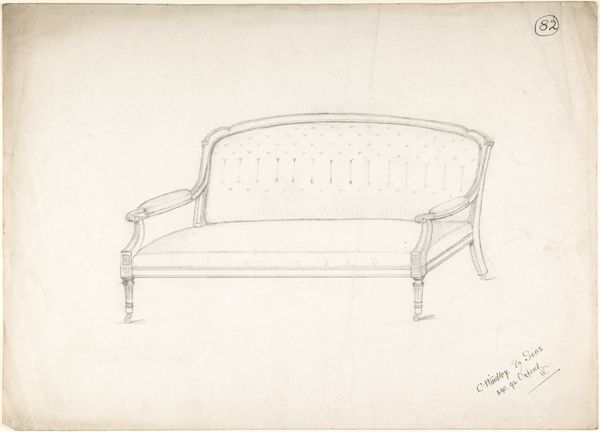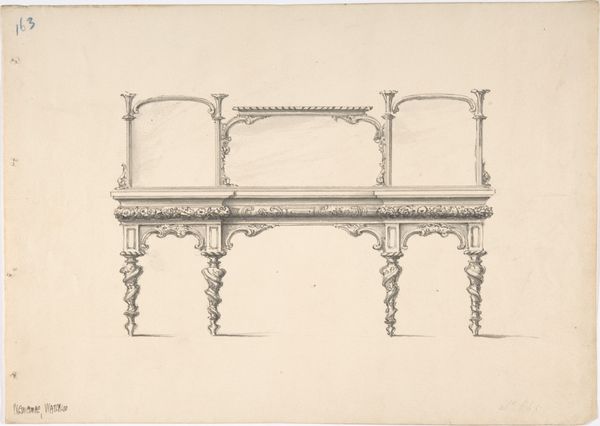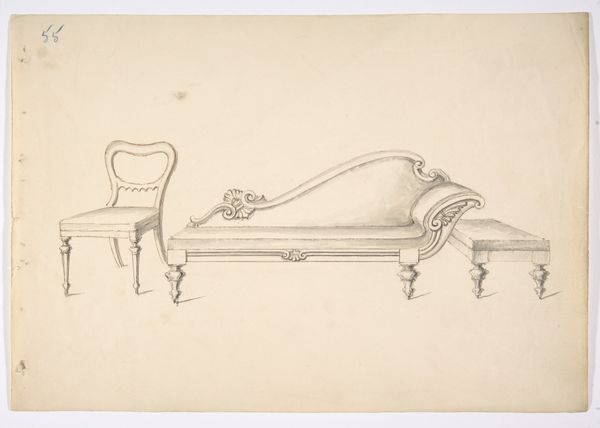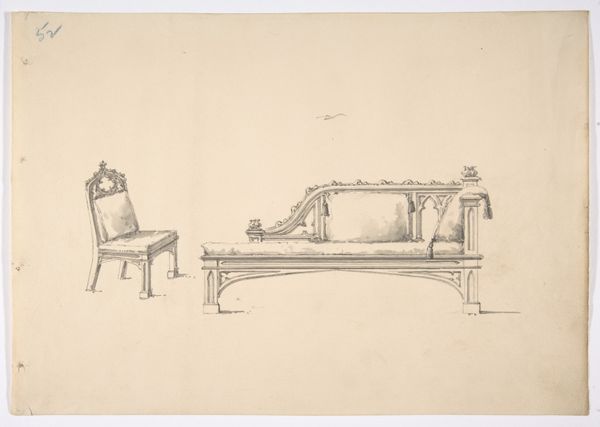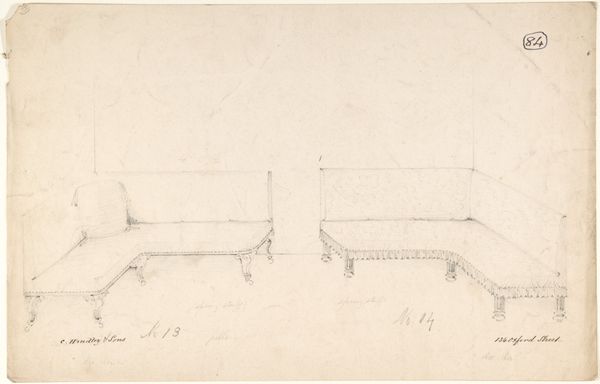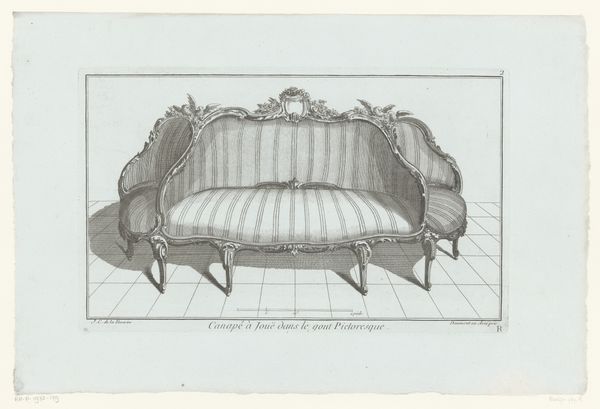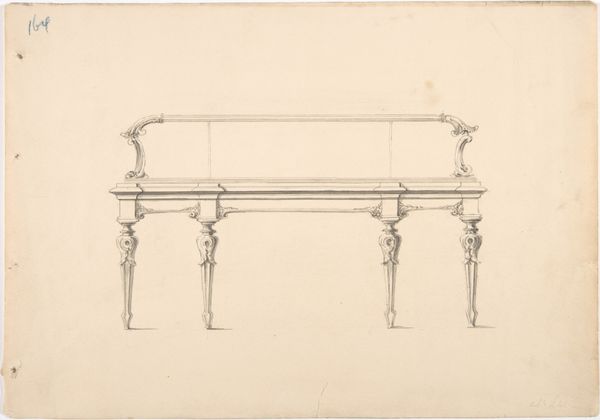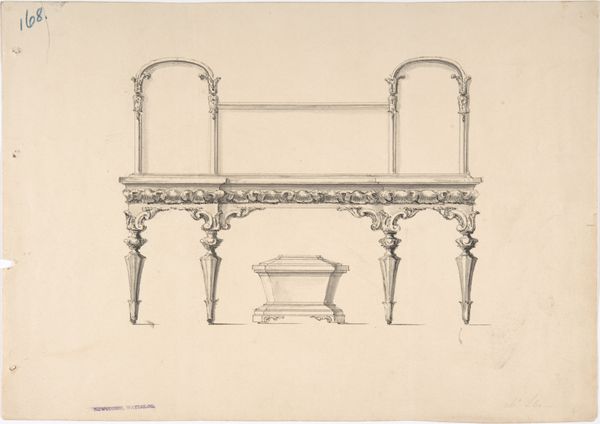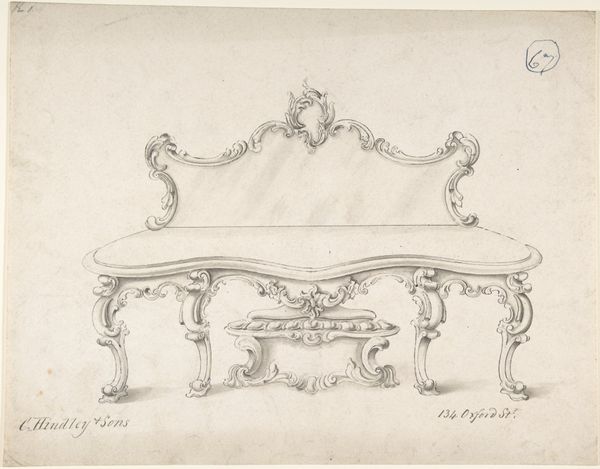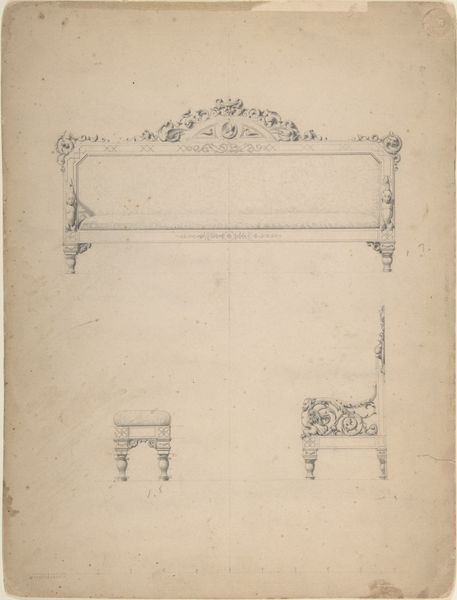
drawing, print, pencil
#
drawing
#
neoclacissism
# print
#
pencil sketch
#
furniture
#
etching
#
geometric
#
pencil
#
line
#
academic-art
Dimensions: 10 3/8 x 14 in. (26.3 x 35.6 cm)
Copyright: Public Domain
Curator: What strikes me first about this design is the airiness, the incredible lightness of the structure. It’s barely there. Editor: Well, it’s an etching of a design; perhaps the materiality is less crucial. We are looking at an artwork titled "Design for a Settee," attributed to an anonymous artist, dating back to the period between 1765 and 1795. It is currently housed at the Metropolitan Museum of Art. Curator: Note the geometric shapes playing against the organic curves of the floral carvings. What might seem purely decorative reveals itself as a precise, architectonic articulation of space. Editor: Its creation coincides with the rise of Neoclassicism, a conscious revival of Greco-Roman aesthetics amid shifts in social structures and power. Etchings such as these served as blueprints, disseminating aspirational design to an expanding market, standardizing taste… Curator: You use the word “aspirational”, and it is exactly right, with a double-meaning. On the one hand, to aspire to ownership; on the other, the settee "aspires," if one can imagine such a thing, toward lightness and air. This tension between grounded functionality and aspiration gives it so much power. The structure almost disappears to the eye. Editor: Considering that furniture, particularly among the aristocracy, was potent with socio-political connotations. Imagine the elite lounging – signifying leisure and inherited wealth, broadcasting specific ideological tenets about order, taste, and domesticity in the age of revolution. Curator: Agreed. It's not merely an object but a symbol. Consider the perfect lines, a subtle commentary on social structures and control. What the designer is trying to say through his organization of line and geometric volumes. Editor: Indeed. Analyzing these artifacts reminds us of the intrinsic link between art, society, and the silent power of everyday objects. Curator: Absolutely. Seeing how even a design sketch operates on multiple layers gives a richer understanding, beyond mere decoration. Editor: Ultimately, the work embodies the aspirations and ideologies of a changing era, revealed through line, form, and socio-cultural narrative.
Comments
No comments
Be the first to comment and join the conversation on the ultimate creative platform.
